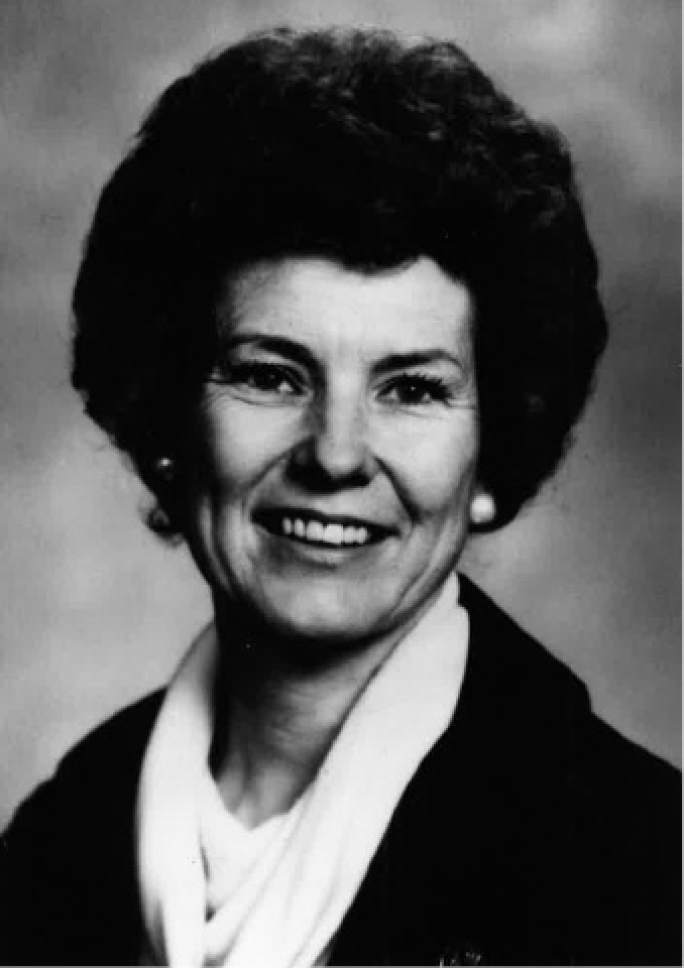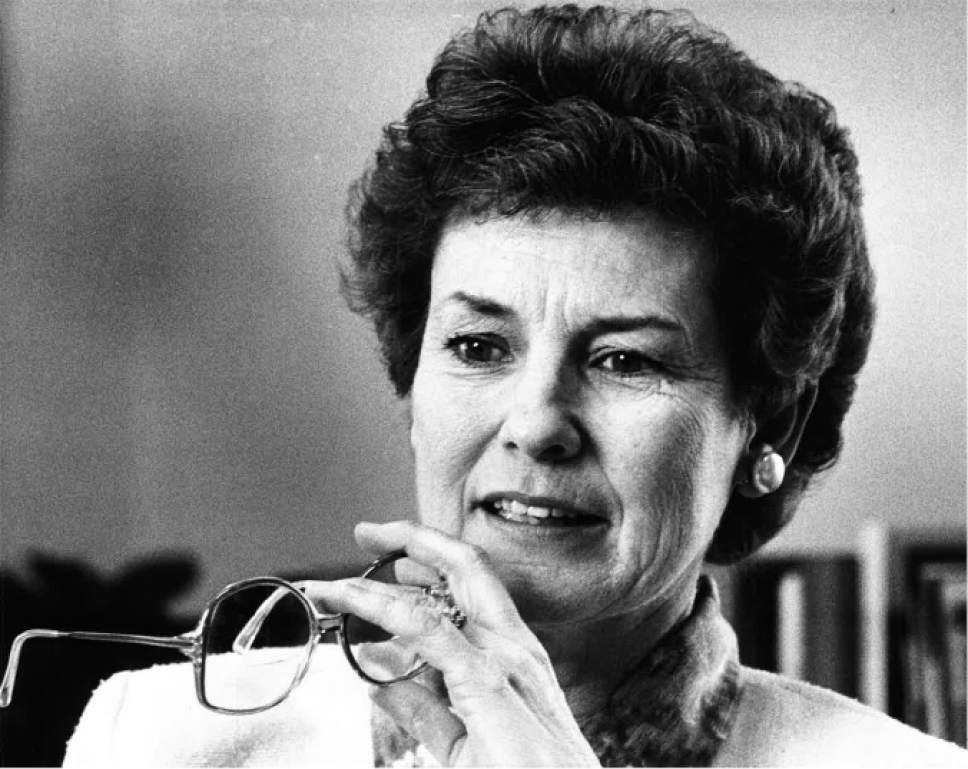This is an archived article that was published on sltrib.com in 2017, and information in the article may be outdated. It is provided only for personal research purposes and may not be reprinted.
Barbara Woodhead Winder took the helm of the LDS Church's all-female Relief Society in April 1984, a few years after the United States became embroiled in a battle over women's rights.
Mormons had been on both sides of the defeated Equal Rights Amendment (ERA), debating for more than a decade the merits of staying at home with children vs. working outside of it. They also argued about gender roles and male-female relationships.
As the 11th general president of the Relief Society, Winder struck a conciliatory tone after The Church of Jesus Christ of Latter-day Saints' headline-grabbing stance against the ERA.
"It is a time to heal," Winder told the faithful, according to a biography on the faith's website, "a time to bond women to women and women to men. We can have unity in diversity and diversity in unity. We don't have to be like one another to enjoy sisterhood."
Winder, who led Mormon women around the world for six years, died Sunday in Utah due to complications from pulmonary fibrosis. She was 86.
"Barbara was a peacemaker," Elaine Jack, who followed Winder as general Relief Society president, said Tuesday. "She wouldn't have caused conflict in any way. She was a positive person with deep spirituality — and very selfless in wanting to do good for others."
Winder's "happy demeanor" set the tone for her presidency, said Jack, a longtime friend who had worked side by side with her predecessor. "It was a peaceful time."
Mormon historian Jill Mulvay Derr said Winder's focus at the pulpit and during her stint as head of the Relief Society was on "coming to Christ."
She brought a "unifying message," said Derr, co-author of a recent history about the organization's first 50 years, which resulted in significant action.
During Winder's tenure, Mormonism's three female-run auxiliaries — Relief Society for adult women, Young Women for girls ages 12 to 17 and Primary for children — were once again united under a single roof: the Relief Society Building in downtown Salt Lake City.
"In the 19th century, the three women's organizations worked closely together, but, over time, they became much more separate entities," Derr said. "Bringing them together in the same building was the beginning of working together more closely. We see the fruition of that effort today."
Winder also supported Derr's work of writing the Relief Society history.
One day, the gentle leader invited the scholar into her office for a kneeling prayer, Derr recalled, in which Winder asked God to pour down divine assistance for the research.
"It was so encouraging to a young historian," Derr said. "She was such a generous person."
Winder was born May 9, 1931, in Midvale, the eldest of four children, but she spent the bulk of her childhood in East Millcreek, where she excelled in school and became popular with her peers.
"She was a happy child," according to an obituary in The Salt Lake Tribune, "and a light to all who knew her."
Near the end of her sophomore year at the University of Utah, the family's milkman, Ned Winder, of the famed Winder Dairy, introduced her to his brother Richard, who had just returned from a Mormon mission.
"On their first date, they went on a Winder family hayride," recounted a profile in the LDS Church's Ensign magazine. "Two and a half weeks later, Barbara accepted Richard's marriage proposal."
The couple produced four children of their own — rearing them on Winder Lane in West Valley City near the dairy and family bakery and with 19 of their cousins — and spent endless months and years serving their church.
She served alongside her husband overseeing the San Diego LDS Mission, the LDS Czechoslovakia Mission, and the Family and Church History Mission. She accompanied her husband to the Czech Republic, where he served as patriarch, then later worked as the assistant matron of the Jordan River Temple in South Jordan and as the first matron of the faith's rebuilt Nauvoo Temple in Illinois.
"The Winders took on so many assignments," Jack said. "Barbara was a genuine servant, not out for praise for herself. She had no ego or need to be out front."
Looking back on her time leading LDS women, Winder relished the chance to bring healing.
Every time she walked into the Relief Society Building, Winder told an interviewer in recent years, she could feel "the continuing spirit of unity."
It was, she said, "one of the things that has been my joy."
Twitter: @religiongal





